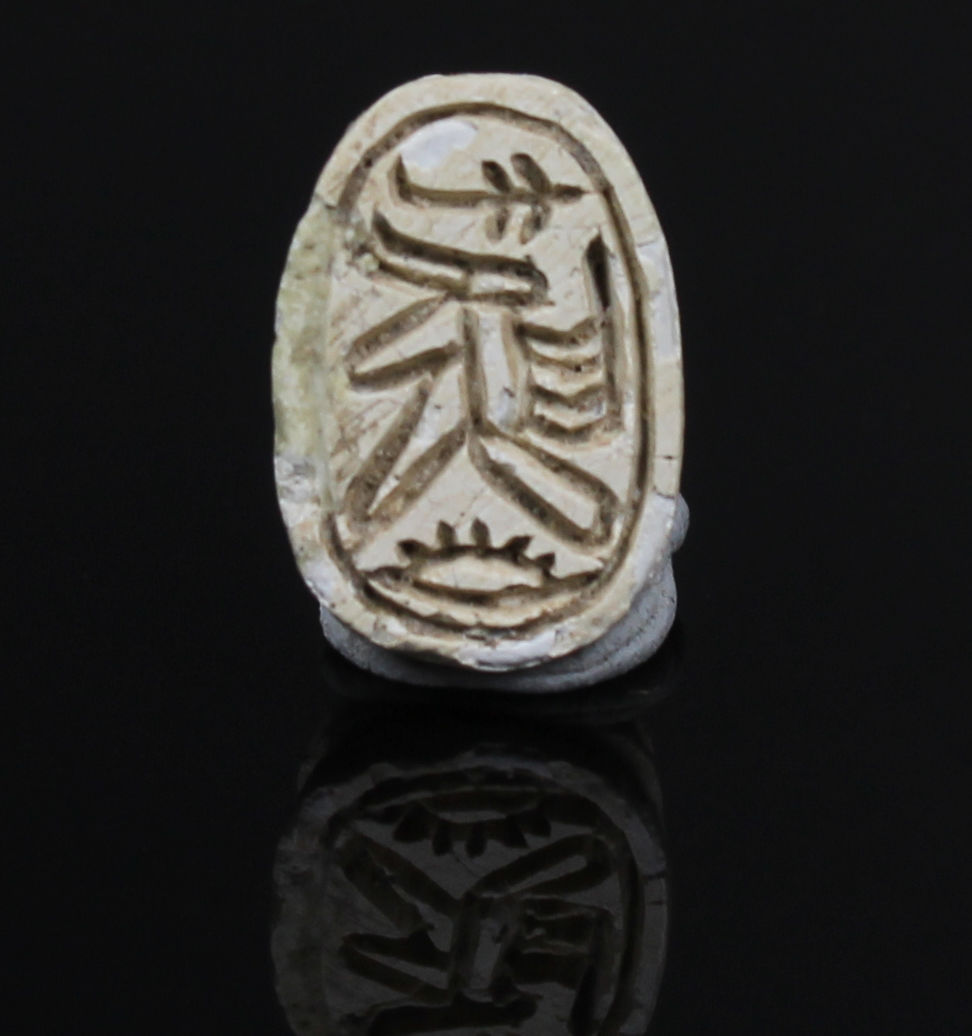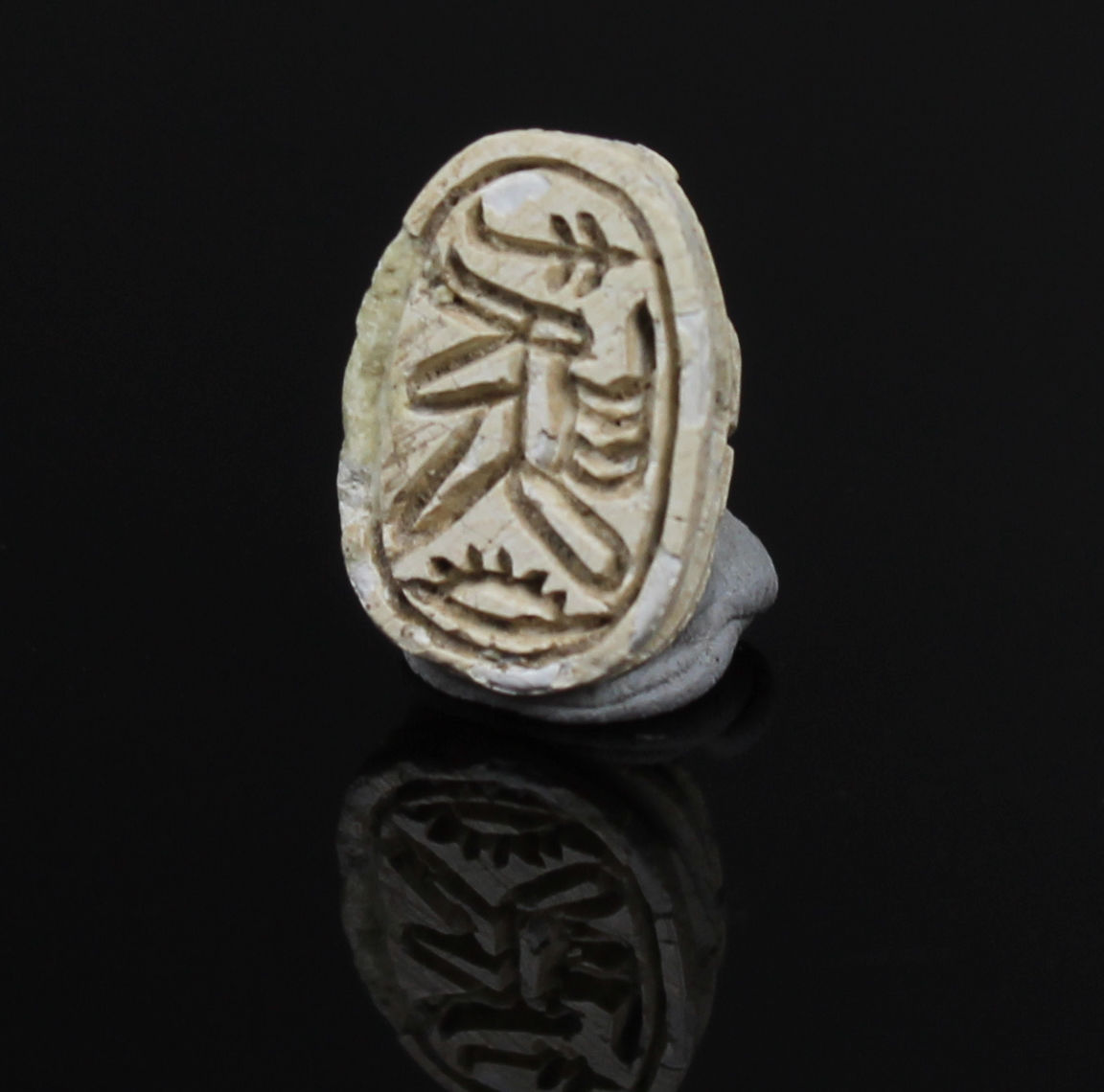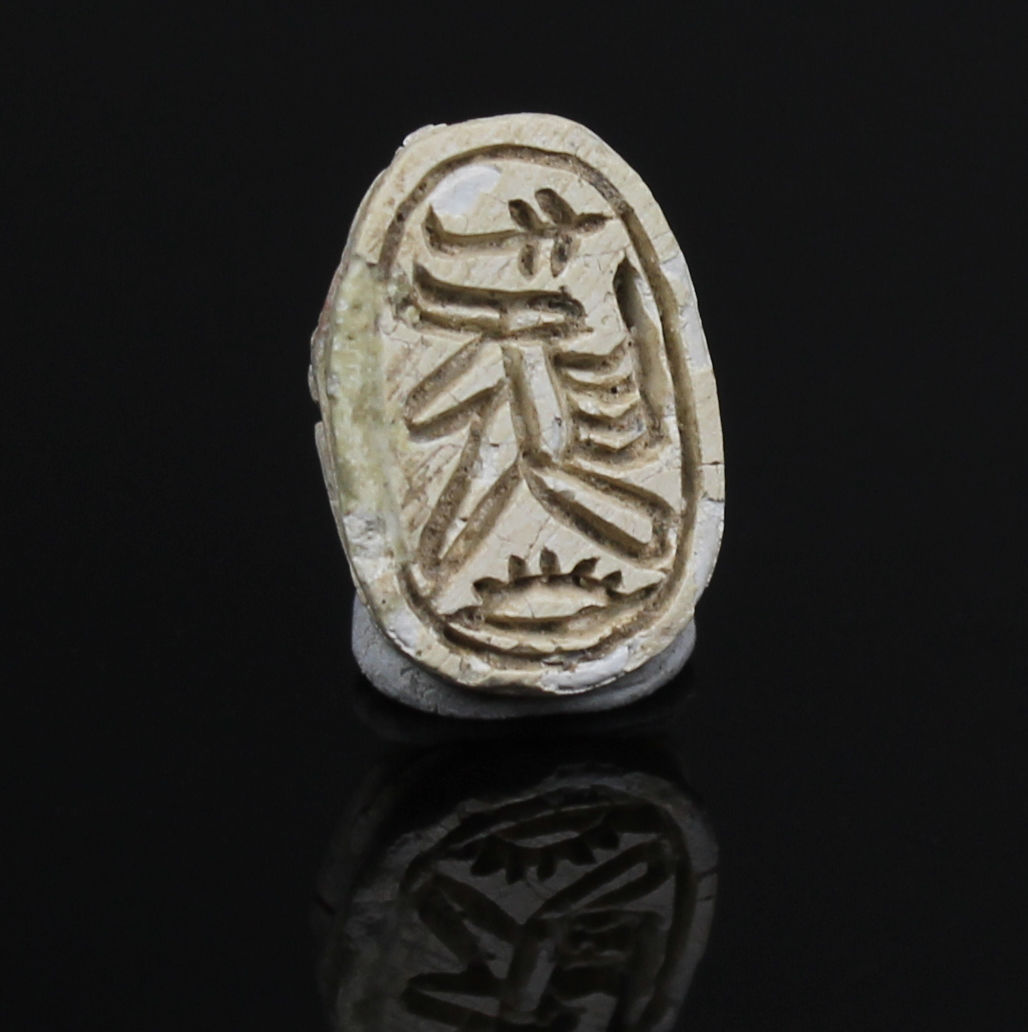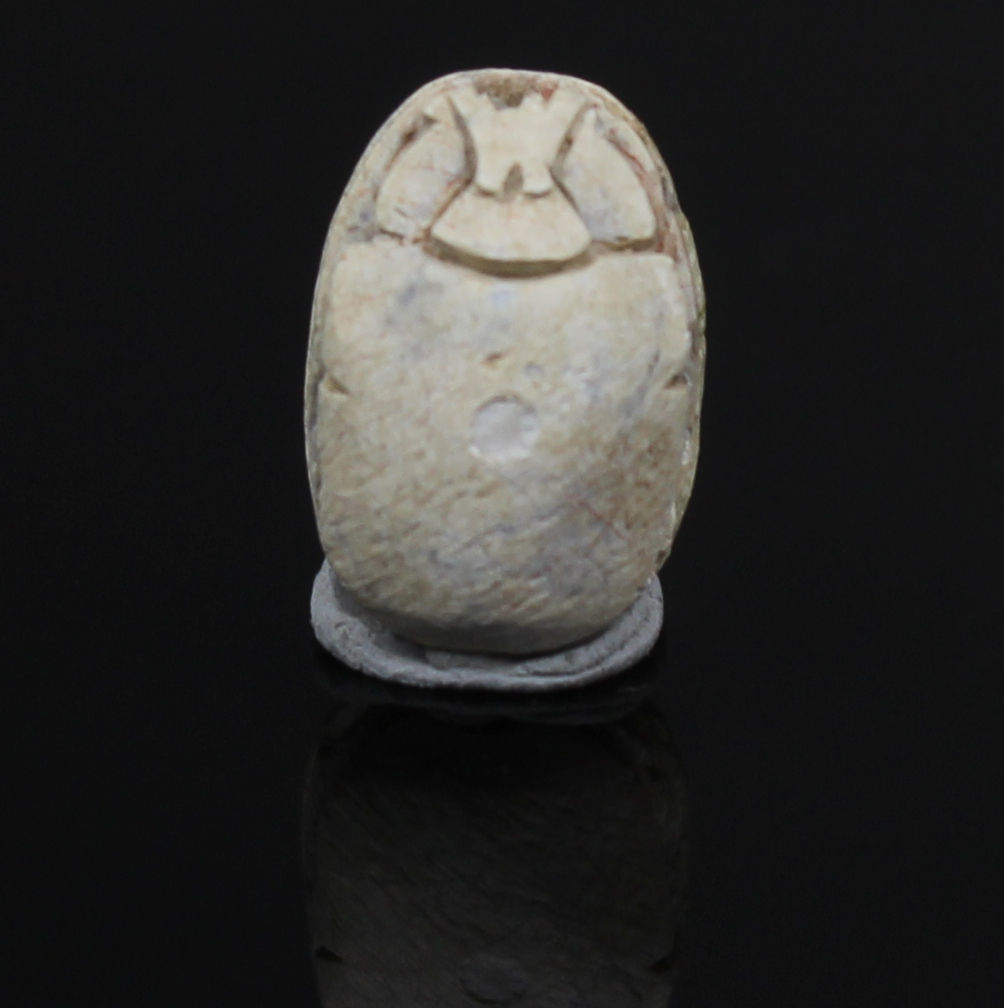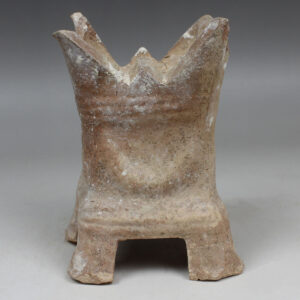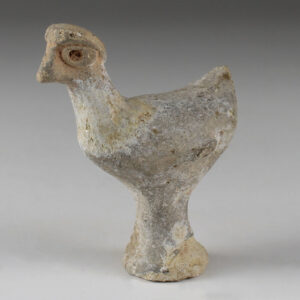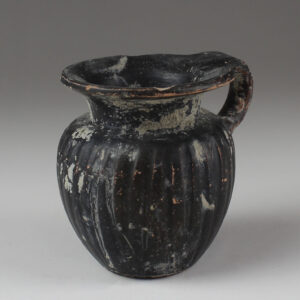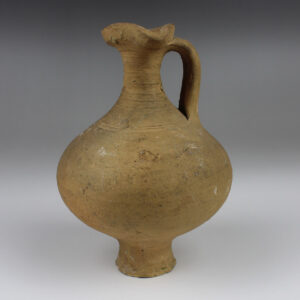Description
| ITEM | Scarab with sedge and bee (pharaoh) + rising sun |
| MATERIAL | Steatite |
| CULTURE | Egyptian |
| PERIOD | Second Intermediate Period, 1700 – 1550 B.C |
| DIMENSIONS | 13 mm x 7 mm |
| CONDITION | Good condition |
| LOCATION | Beekeeping Museum Mellinde, Maartensdijk (Netherlands) |
The Egyptians saw the Egyptian scarab (Scarabaeus sacer) as a symbol of renewal and rebirth. The beetle was associated closely with the sun god because scarabs roll large balls of dung in which to lay their eggs, a behavior that the Egyptians thought resembled the progression of the sun through the sky from east to west. Its young were hatched from this ball, and this event was seen as an act of spontaneous self-creation, giving the beetle an even stronger association with the sun god’s creative force. The connection between the beetle and the sun was so close that the young sun god was thought to be reborn in the form of a winged scarab beetle every morning at sunrise. As this young sun god, known as Khepri, rose in the sky, he brought light and life to the land.
Scarab amulets were used for their magical rejuvenating properties by both the living and the dead. Scarabs were used by living individuals as seals from the start of the Middle Kingdom (ca. 2055 BCE) onwards. The most common inscription for these scarabs was the owner’s name. The incised design was often a schematic combination of hieroglyphs and geometric patterning. Patterns could often denote the specific administrative office held by the wearer.
Scarabs were also often rendered naturalistically in the round. The regenerative powers of scarabs of this nature could be used by either the living or the dead for healing and protection during quotidian activities or during a deceased person’s passage into the afterlife.
The depiction of a bee, sedge plant, and rising sun on an Egyptian scarab would likely carry specific symbolic significance. Each element has its own meaning in Egyptian iconography:
Bee: The bee was often associated with the goddess Neith, who was linked to creation and war. Bees were also symbolic of industry and productivity, and their presence on a scarab may signify aspects of creation and diligence.
Sedge Plant: The sedge, or papyrus plant, was a symbol of Lower Egypt. It represented the northern part of the country and had associations with protection. The sedge plant also symbolized order and stability.
Rising Sun: The rising sun was a powerful symbol of rebirth and regeneration, closely tied to the daily cycle of the sun. It was associated with the sun god Ra and the idea of eternal renewal and continuity.
Combining these elements on a scarab could potentially convey a message related to creation, protection, and the cyclical nature of life and the cosmos. The scarab, being a popular amulet and symbol in ancient Egypt, served both protective and religious functions, often associated with life, death, and rebirth.


